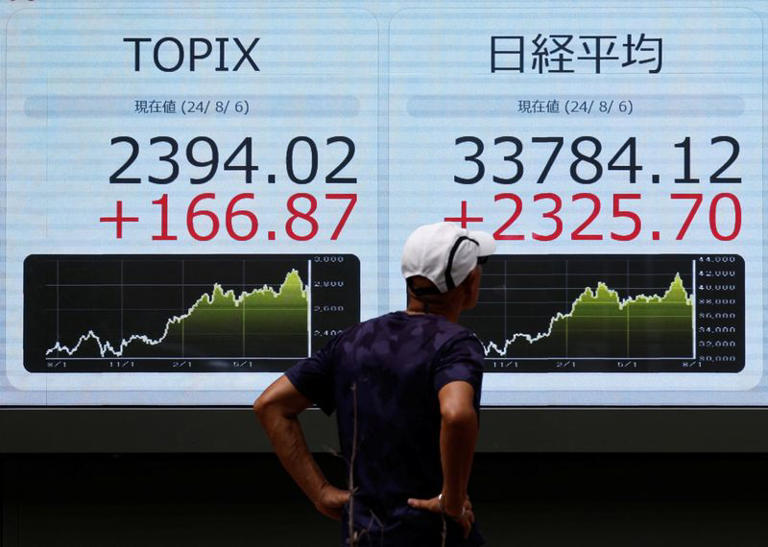Japanese stocks surged on Tuesday, bouncing back robustly after a challenging previous week. The Nikkei 225 index saw a significant gain of over 2%, recovering from the declines experienced the week prior. This recovery was driven by a stabilization in the yen, which had been a major source of volatility in recent trading sessions. Investors welcomed the respite, as the stability of the yen provided much-needed relief and confidence in the market.
Last week, the yen had seen substantial fluctuations, reaching a peak of 141.675 per dollar, its highest level in seven months. However, on Tuesday, the yen was slightly weaker at 147.435 per dollar. This recent moderation in the yen’s movements helped calm investor nerves, allowing the Japanese equity market to regain ground. The reduction in currency volatility suggests that the intense unwinding of carry trades—a strategy where investors borrow in currencies with low-interest rates to invest in higher-yielding assets—may be stabilizing for now.
The rebound in Japanese shares came amid a broader, albeit muted, Asian market performance. With Japanese equities taking center stage, investors’ attention was also drawn to the upcoming U.S. economic data releases, which are expected to have a substantial impact on market sentiment. This week’s data slate includes critical indicators such as the U.S. producer price index (PPI), which is set to be released later on Tuesday. The PPI measures wholesale inflation and can provide insights into future price pressures in the economy.
On Wednesday, the focus will shift to the consumer price index (CPI) for July, a key indicator of consumer-level inflation. The CPI report is crucial for assessing the current inflationary pressures and will play a significant role in shaping expectations for the Federal Reserve’s monetary policy decisions. Investors are closely watching these reports to gauge whether the Federal Reserve will implement a 50 basis point cut or a more modest 25 basis point cut in its upcoming September meeting. The CME FedWatch tool reflects the market’s split sentiment on this issue, highlighting the uncertainty among traders.
In addition to the CPI, the retail sales report, scheduled for Thursday, will provide further insight into consumer spending patterns and overall economic activity. This report is expected to offer a comprehensive view of the health of the U.S. consumer sector, which is a critical component of the broader economy.
Beyond the economic data, the market will also be attentive to comments from Federal Reserve Bank of Atlanta President Raphael Bostic. His remarks, expected later in the day, could provide additional clues about the Fed’s outlook on interest rates and inflation. As Bostic’s comments are likely to influence market expectations, they will be closely monitored by investors.
In Europe, attention will be focused on key economic reports, including the UK wage data for June, the ILO unemployment rate for June, and Germany’s ZEW economic survey. The UK wage data will offer insights into labor market conditions and wage growth, while the ILO unemployment rate will provide a snapshot of the employment situation. Germany’s ZEW economic survey will shed light on economic sentiment and current conditions, which are important for understanding the economic outlook in Europe.
The global economic landscape is also influenced by other significant events. For instance, an anticipated interview between Republican presidential candidate Donald Trump and billionaire entrepreneur Elon Musk faced technical issues that delayed the session. This situation underscored the ongoing interplay between political developments and market sentiment.
Overall, the strong performance of Japanese stocks on Tuesday highlights the impact of currency stability on investor confidence. As markets await critical U.S. economic data and other significant reports, the interaction between these factors will be essential in determining the future direction of global equities. Investors are navigating a complex environment of economic indicators, geopolitical developments, and political events, all of which will shape market dynamics in the coming days.
